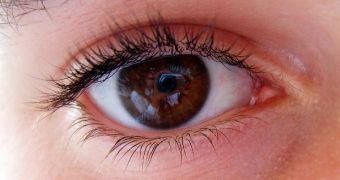British scientists at the University College London (UCL) announce that they were recently able to identify some of the most elusive structures in the human brain, namely the “grid cells.” These special formations are the ones in charge of creating the internal maps of our surroundings that we unconsciously use to get around. This is the first time such an announcement is made, and, if its conclusions are verified, it could be one of the greatest discoveries in the field of brain sciences made in a long time.
The investigation used a combination of brain-imaging technologies and virtual reality (VR) simulations to try to identify the grid cells and their locations. The scientists knew that these highly specialized cells were there, as studies on unsuspecting lab mice had proven their existence. Still, all previous attempts at discovering the same neurons in humans had failed. Spatial memory is a very important part of the human brain, in the sense that it makes us aware of everything around us, and constantly updates the conscious mind as to our orientation in a certain environment.
Details of the work appeared yesterday, January 20, in the latest issue of the esteemed scientific publication Nature. The investigation was made possible with grant money from the European Union, and the Medical Research Council. The science team was based at the UCL Institute of Cognitive Neuroscience, and was led by Professor Neil Burgess. In previous works, it was revealed that grid cells fired up in the brain in geometrically regular, triangular grids, which corresponded to a map of a rat's surroundings. This helped the animals plot a course through obstacles, and also to remember places they'd been to before.
“It is as if grid cells provide a cognitive map of space. In fact, these cells are very much like the longitude and latitude lines we're all familiar with on normal maps, but instead of using square grid lines it seems the brain uses triangles,” UCL expert Dr. Caswell Barry, a coauthor of the study, says. “Although we can't see the grid cells directly in the brain scanner, we can pick up the regular six-fold symmetry that is a signature of this type of firing pattern. Interestingly, the study participants with the clearest signs of grid cells were those who performed best in the virtual reality spatial memory task, suggesting that the grid cells help us to remember the locations of objects,” Dr. Christian Doelle, the lead author of the investigation, adds.
“The parts of the brain which show signs of grid cells – the hippocampal formation and associated brain areas – are already known to help us navigate our environment and are also critical for autobiographical memory. This means that grid cells may help us to find our way to the right memory as well as finding our way through our environment. These brain areas are also amongst the first to be affected by Alzheimer's disease which may explain why getting lost is one of the most common early symptoms of this disease,” Burgess concludes.

 14 DAY TRIAL //
14 DAY TRIAL //